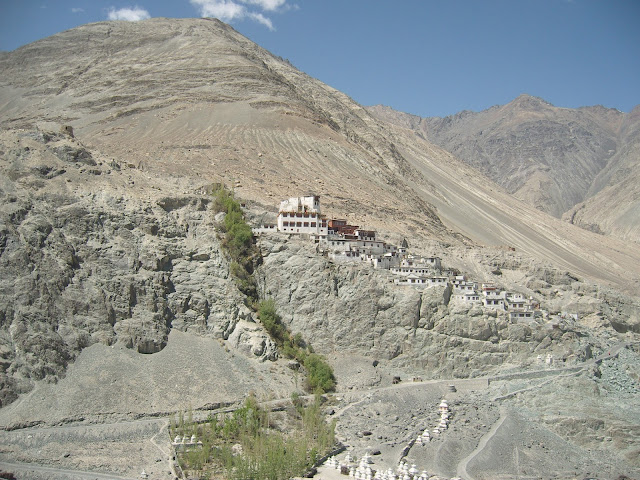Pelling is about 105 km from Darjeeling. The journey took us about 2 hours, as we travelled through farms on both sides of the road, followed by mountains throughout most of the journey and occasional plateaus. We reached Geyzing (also called Gyalshing) which is a district headquarter at a height of about 6500 feet, after which we climbed up further on a mountain top to reach Pelling situated at a height of 7200 feet.
There is an Upper, Middle and Lower Pelling, depending on the height at which you stay on top of the mountain. I found Upper Pelling more comfortable for staying as it seemed less congested and gave a better look of Kanchenjunga mountain, the main attraction in Pelling.
 |
| View of Kanchenjunga from Upper Pelling. |
 | |
| View of Lower Pelling from mountain top. |
The next morning we took a trip for sightseeing around Pelling. We saw a beautiful, tall waterfall called Rimbi waterfalls. The view was mesmerizing. The water was chilling cold. Simply dipping your legs in the small lake at the bottom of the fall makes you feel fresh. Rimbi waterfalls further down lead to Rimbi rock garden, a place full of rocks with a stream of water from Rimbi falls passing through.
 |
| Rimbi water falls. |
 |
| Khecheopalri Lake. |
The next day,we visited Pelling monastery and enjoyed watching Kanchenjunga from the helipad on top of the mountain. We walked through the narrow but clean roads of Upper Pelling. It was drizzling that day and we were enjoying the wind chill.
 |
| Pelling Monastery |
Overall, Pelling is a great place to be in. Highly recommended for tourists visiting Darjeeling and Gangtok.











































